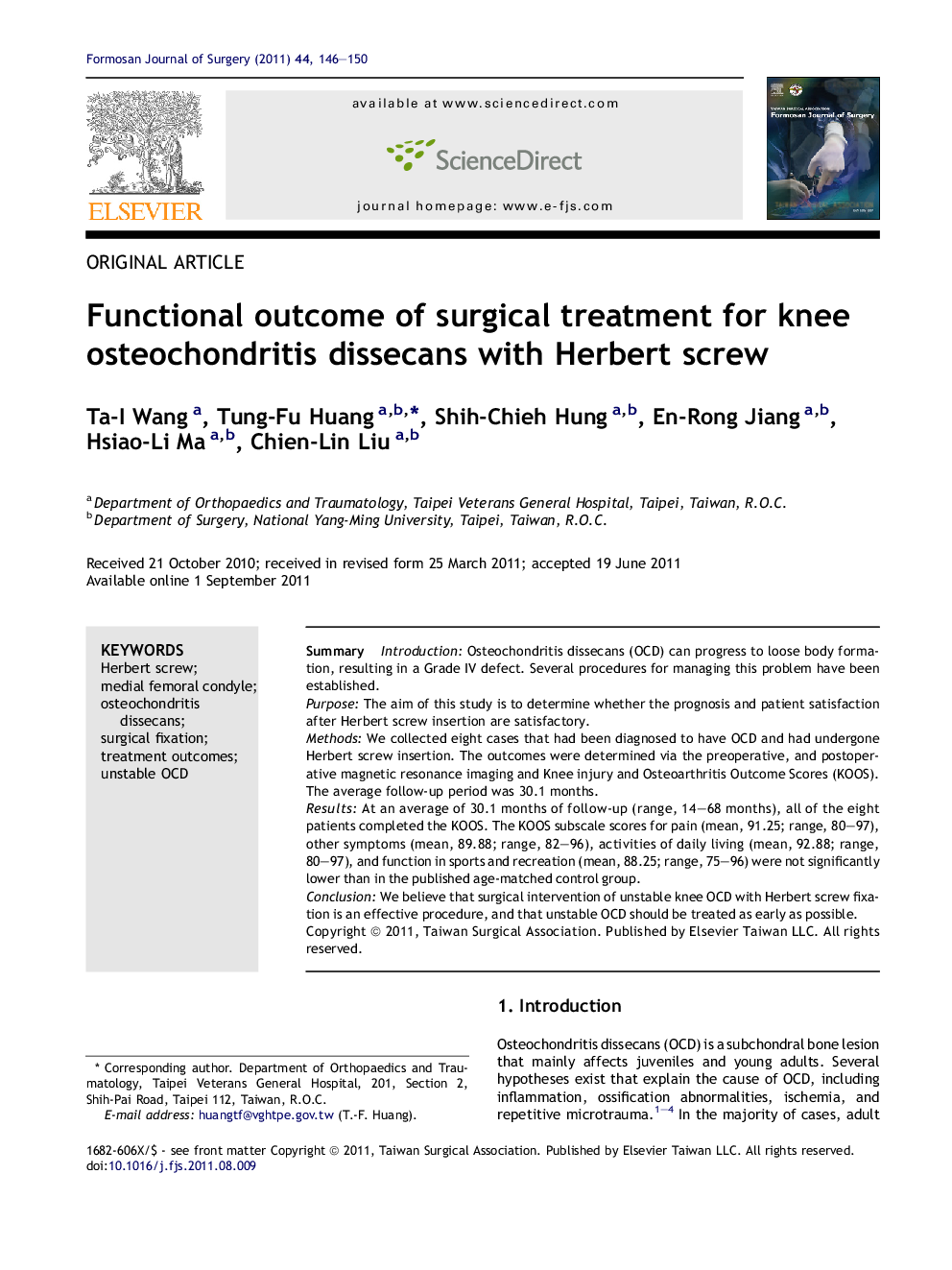| Article ID | Journal | Published Year | Pages | File Type |
|---|---|---|---|---|
| 4285201 | Formosan Journal of Surgery | 2011 | 5 Pages |
SummaryIntroductionOsteochondritis dissecans (OCD) can progress to loose body formation, resulting in a Grade IV defect. Several procedures for managing this problem have been established.PurposeThe aim of this study is to determine whether the prognosis and patient satisfaction after Herbert screw insertion are satisfactory.MethodsWe collected eight cases that had been diagnosed to have OCD and had undergone Herbert screw insertion. The outcomes were determined via the preoperative, and postoperative magnetic resonance imaging and Knee injury and Osteoarthritis Outcome Scores (KOOS). The average follow-up period was 30.1 months.ResultsAt an average of 30.1 months of follow-up (range, 14–68 months), all of the eight patients completed the KOOS. The KOOS subscale scores for pain (mean, 91.25; range, 80–97), other symptoms (mean, 89.88; range, 82–96), activities of daily living (mean, 92.88; range, 80–97), and function in sports and recreation (mean, 88.25; range, 75–96) were not significantly lower than in the published age-matched control group.ConclusionWe believe that surgical intervention of unstable knee OCD with Herbert screw fixation is an effective procedure, and that unstable OCD should be treated as early as possible.
